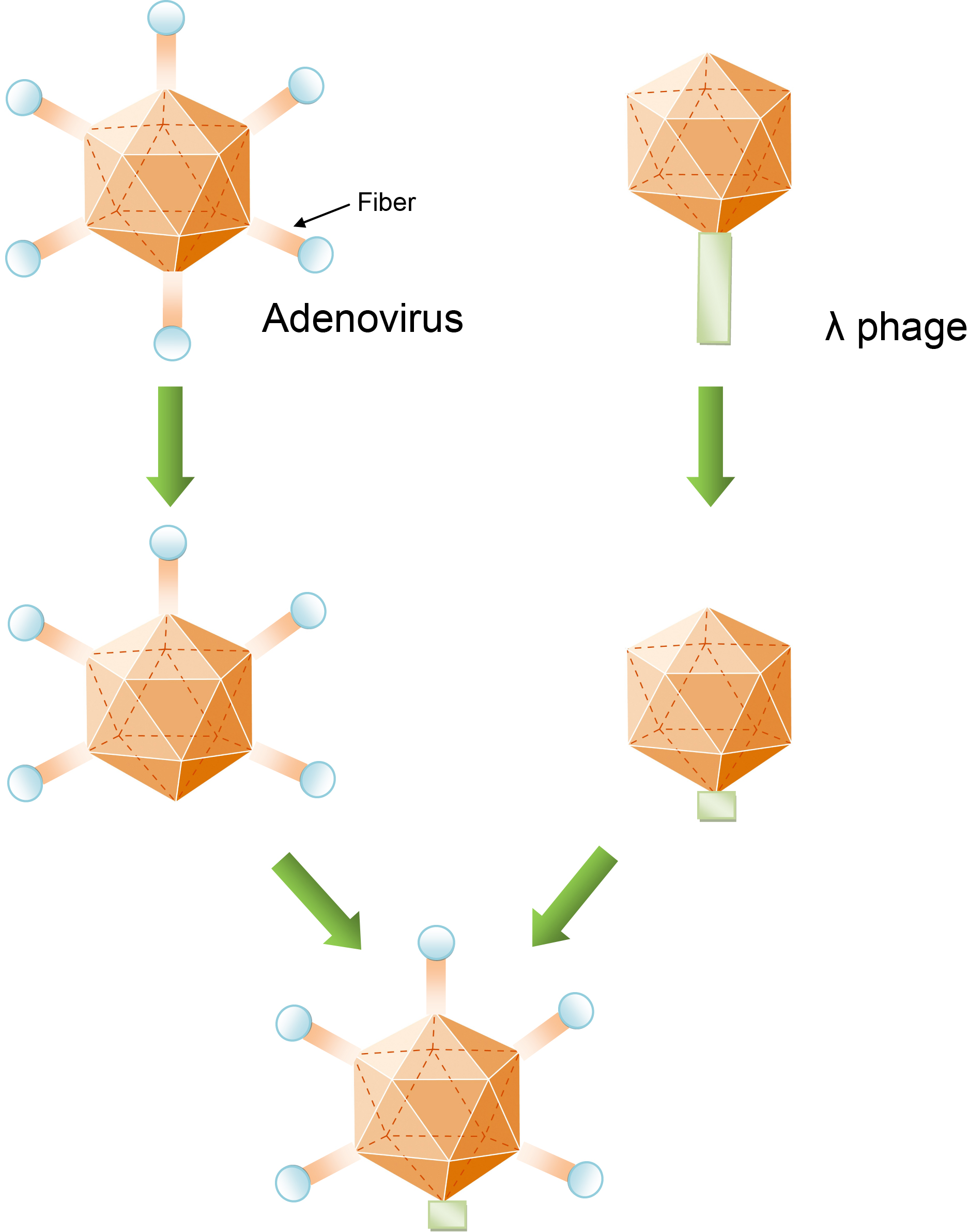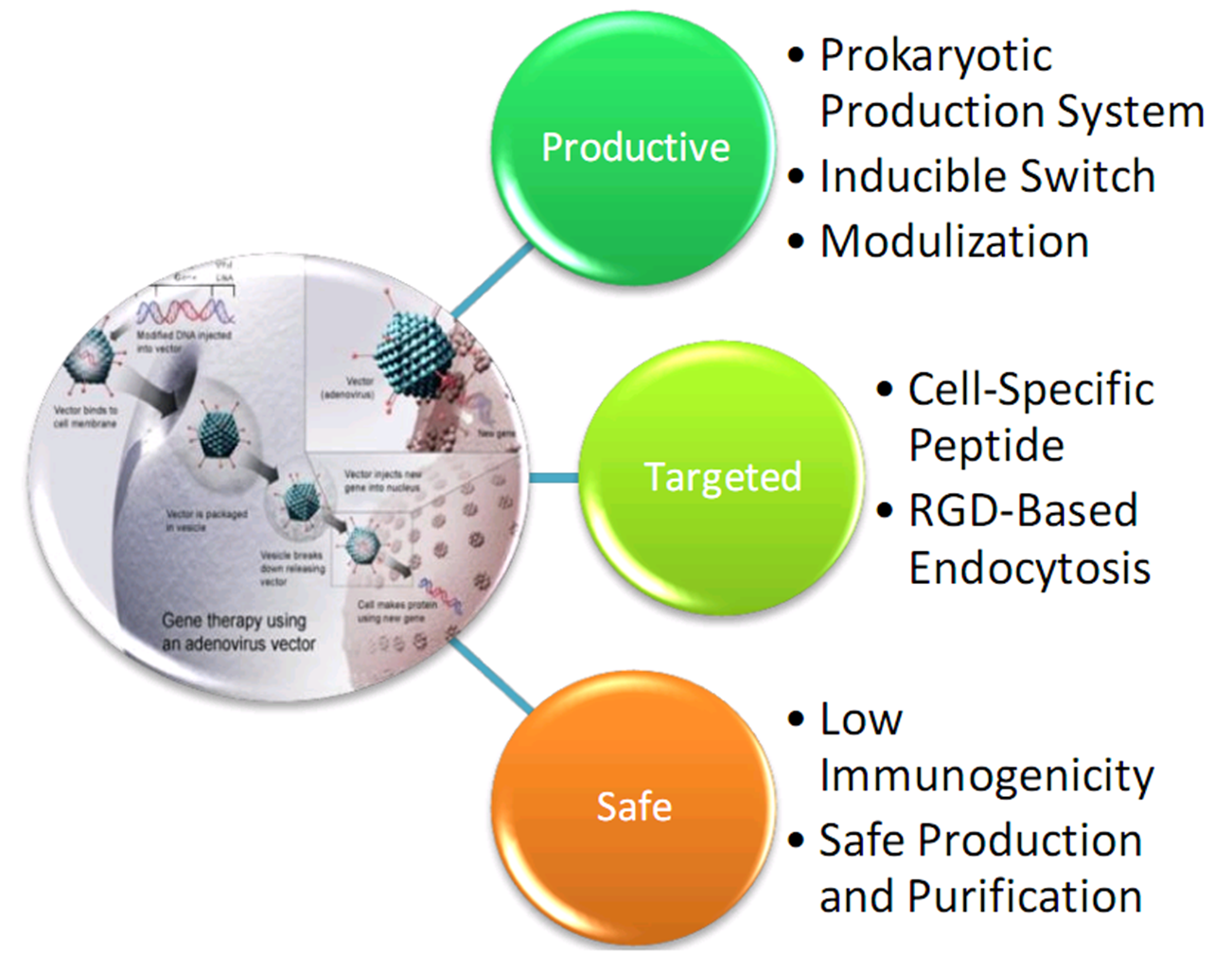Team:Tsinghua/Brainstorming
From 2009.igem.org
(→Basic Idea) |
|||
| Line 16: | Line 16: | ||
We aim at synthesizing a gene therapy vector which is structurally and functionally similar to a commonly used viral vector termed adenovirus vector[6]. However, in order to achieve the synthetic biology standard for human practice in the realm of gene therapy, this gene therapy vector should be industrially easy to manipulate in its production and genetically easy to modify in its specificity. Also, based on the social implication of synthetic biology[7,8], the synthetic gene therapy vector must be safe for possible clinical use. | We aim at synthesizing a gene therapy vector which is structurally and functionally similar to a commonly used viral vector termed adenovirus vector[6]. However, in order to achieve the synthetic biology standard for human practice in the realm of gene therapy, this gene therapy vector should be industrially easy to manipulate in its production and genetically easy to modify in its specificity. Also, based on the social implication of synthetic biology[7,8], the synthetic gene therapy vector must be safe for possible clinical use. | ||
| - | [[Image: | + | [[Image:rp2.png|center]] |
We compared and contrasted the structure of viron between adenovirus and bacteriophage lambda, and found the following facts: 1) the shapes of the viron of both adenovirus and bacteriophage lambda is a regular icosohedron[9], while the adenovirus protein (Fiber) that determines its specificity is positioned on the vertices of the icosohedral viron, which can specifically bind with a receptor called CAR[10]; 2) CAR is widely distributed on the plasma membrane of various types of cells[11-13], which partially contributes to its poor specificity to the target cells as well as its potential cytotoxicity[9,10]; 3) the proliferation of bacteriophage lambda is solely on the basis of its host E.coli, while the production of adenovirus gene therapy vector normally depends on eukaryotic cell lines which are more cost-inefficient and time-consuming; 4) the vertices of adenovirus viron are composed of pentamer of protein III attached to trimer of protein fiber, while the vertices of bacteriophage lambda viron are composed of protein C encoded by lambda phage genome. | We compared and contrasted the structure of viron between adenovirus and bacteriophage lambda, and found the following facts: 1) the shapes of the viron of both adenovirus and bacteriophage lambda is a regular icosohedron[9], while the adenovirus protein (Fiber) that determines its specificity is positioned on the vertices of the icosohedral viron, which can specifically bind with a receptor called CAR[10]; 2) CAR is widely distributed on the plasma membrane of various types of cells[11-13], which partially contributes to its poor specificity to the target cells as well as its potential cytotoxicity[9,10]; 3) the proliferation of bacteriophage lambda is solely on the basis of its host E.coli, while the production of adenovirus gene therapy vector normally depends on eukaryotic cell lines which are more cost-inefficient and time-consuming; 4) the vertices of adenovirus viron are composed of pentamer of protein III attached to trimer of protein fiber, while the vertices of bacteriophage lambda viron are composed of protein C encoded by lambda phage genome. | ||
Revision as of 08:43, 23 September 2009
| Background | Brainstorming | Design | Experiment | Results | Notebook |
|---|
Contents |
Problem Generalization
Although several successive gene therapeutic approaches have been reported[1,2], an ideal gene delivery system with targeted specificity, high efficiency and safety is still not available[1,3,4]. Generally speaking, these factors to a large extent depend on the gene therapy vectors used[5]. In other words, the gene delivery system is still a bottleneck as well as a universal problem in the practical fields of gene therapy.
Basic Idea
We aim at synthesizing a gene therapy vector which is structurally and functionally similar to a commonly used viral vector termed adenovirus vector[6]. However, in order to achieve the synthetic biology standard for human practice in the realm of gene therapy, this gene therapy vector should be industrially easy to manipulate in its production and genetically easy to modify in its specificity. Also, based on the social implication of synthetic biology[7,8], the synthetic gene therapy vector must be safe for possible clinical use.
We compared and contrasted the structure of viron between adenovirus and bacteriophage lambda, and found the following facts: 1) the shapes of the viron of both adenovirus and bacteriophage lambda is a regular icosohedron[9], while the adenovirus protein (Fiber) that determines its specificity is positioned on the vertices of the icosohedral viron, which can specifically bind with a receptor called CAR[10]; 2) CAR is widely distributed on the plasma membrane of various types of cells[11-13], which partially contributes to its poor specificity to the target cells as well as its potential cytotoxicity[9,10]; 3) the proliferation of bacteriophage lambda is solely on the basis of its host E.coli, while the production of adenovirus gene therapy vector normally depends on eukaryotic cell lines which are more cost-inefficient and time-consuming; 4) the vertices of adenovirus viron are composed of pentamer of protein III attached to trimer of protein fiber, while the vertices of bacteriophage lambda viron are composed of protein C encoded by lambda phage genome.
Thus, if we can manage to synthesize a bacteriophage-lambda-based gene therapy vector in simulation to the adenovirus vector but modified at the vertices position of its viron, then the production of the synthetic gene therapy vector can be simplified and much easier to manipulate. In addition, considering the low immunogenicity of lambda phage proteins[6,14], the safety of the gene therapy can be improved compared with conventional adenovirus vector.
Innovation in Synthetic Biology
Our Project1 is equivalent to apply synthetic biology concepts and standards at the genomic level, constructing a genome which is neither adenovirus nor bacteriophage lambda genome. This synthetic genome, however, is capable of producing standardized and targeted gene therapy vectors for human clinical practice. Also, we use the abstraction principle in our design of this genome in order to make the synthetic gene therapy vector easy to be further modified, improved and industrialized. Project1 implicates the evolvement of synthetic biology to a higher level of living organism, the genome, which meets the trends of synthetic biology innovation.
Summary
Our project is aimed at applying the ideas of synthetic biology at the genomic level and building a targeted gene therapy vector that can be applied with respect to the certain need of specificity. Also, we intend to propose a procedure for selecting certain synthetic gene vectors with specificity of one’s interest based our design gene therapy vectors. Mathematic modeling focus on both the synthesis of the targeted gene therapy vectors as well as the evaluation of the specificity selection procedure.
References
[1] David A.Williams, and Christopher Baum. Gene Therapy—New Challenges Ahead. Science. 2003, 302, 400-401.
[2] Marina Cavazzana-Calvo et al.. Immunodeficiency (SCID)-X1 Disease Gene Therapy of Human Severe Combined. Science. 2000, 288, 669-672.
[3] Esmail D. Zanjani, and W. French Anderson. Prospects for in utero human gene therapy. Science. 1999, 285, 2084-2088.
[4] Leland H. Hartwell, Leroy Hood, Michael L. Goldberg, Ann E. Reynolds, Lee M. Silver, Ryth C. Veres. Genetics: From Genes to Genome. McGrawHall, 3rd edition, 2008.
[5] http://en.wikipedia.org/wiki/Gene_therapy
[6] Jerry Guo, and Hao Xin. Splicing out the West?. Science. 2007, 314, 1232-1235.
[7] Chopra Paras, and Akhil Kamma. Engineering life through Synthetic Biology. In Silico Biology 6. http://www.bioinfo.de/isb/2006/06/0038. Retrieved on 2008-06-09.
[8] http://www.syntheticbiology.org
 "
"

